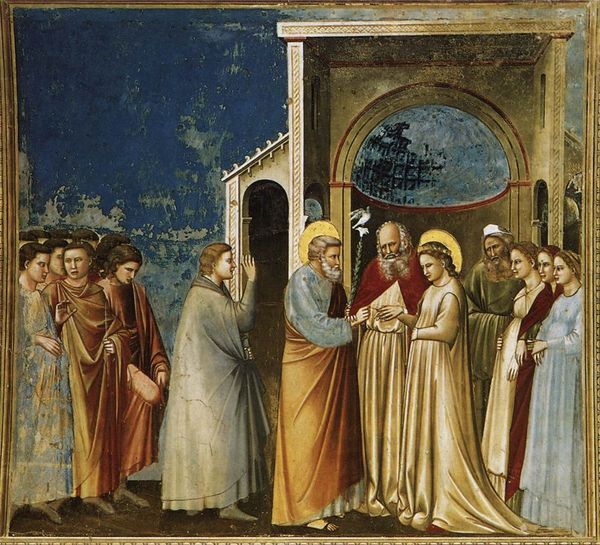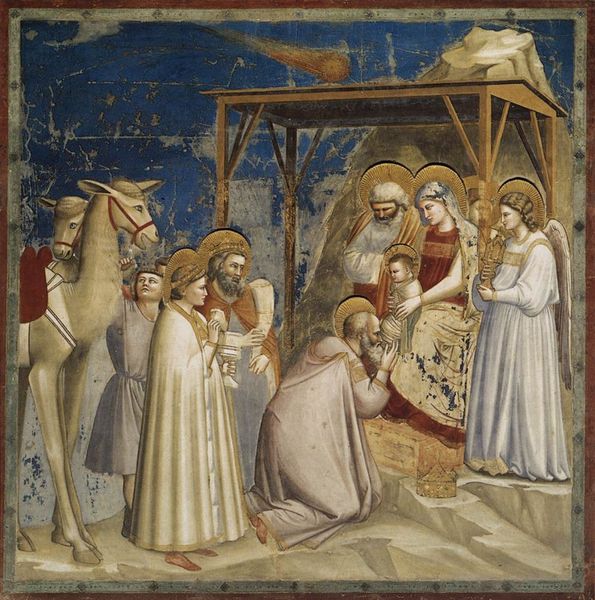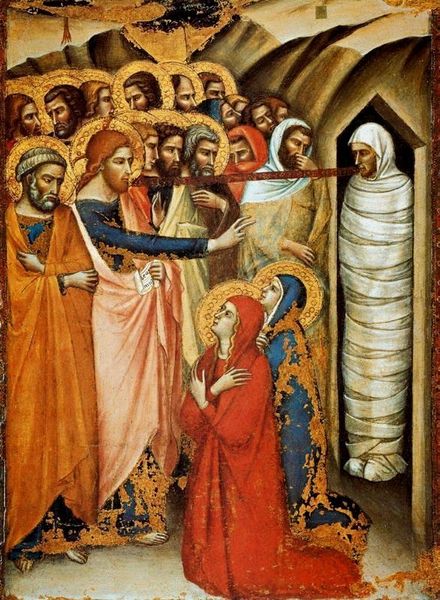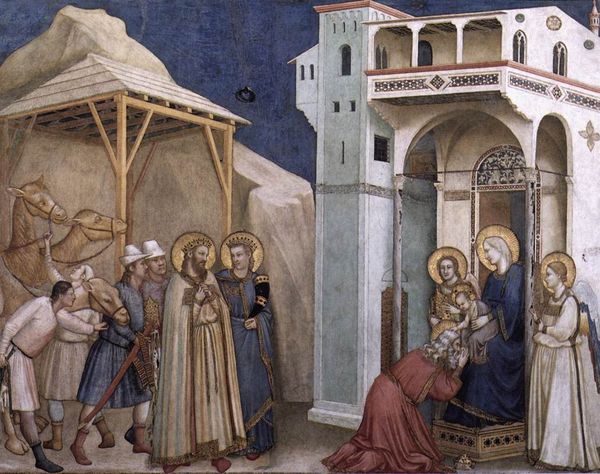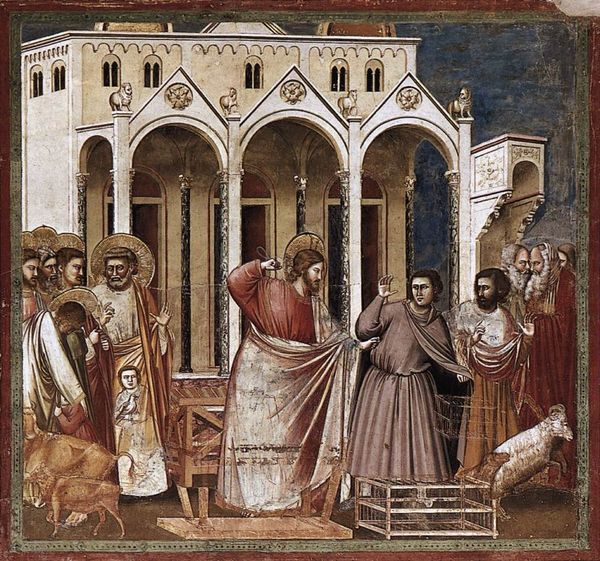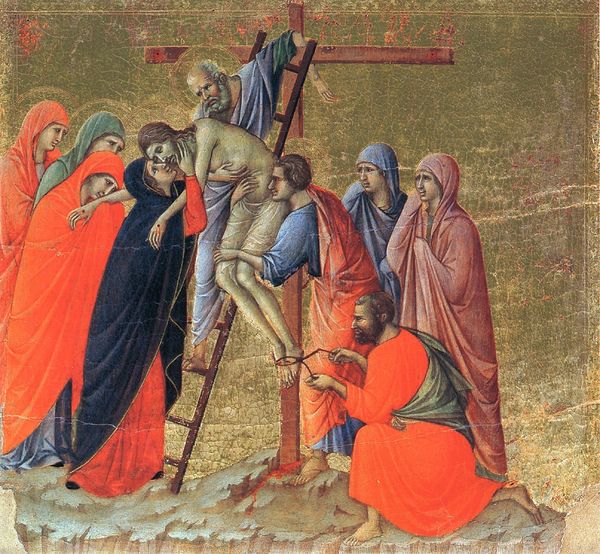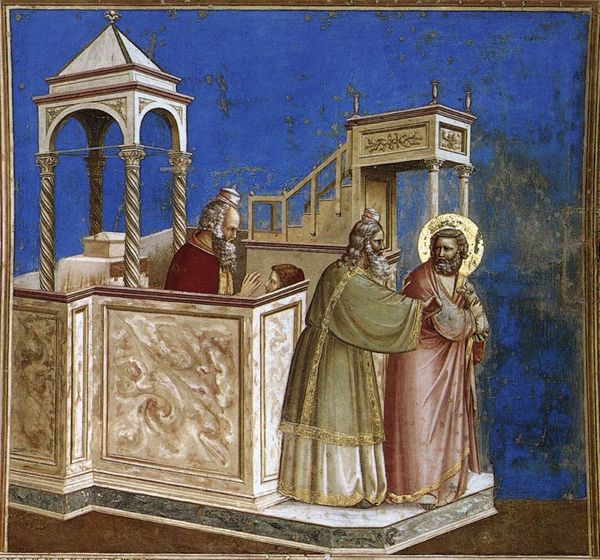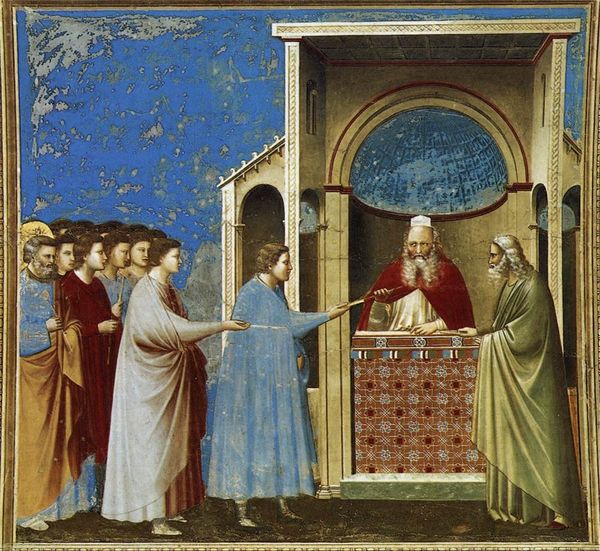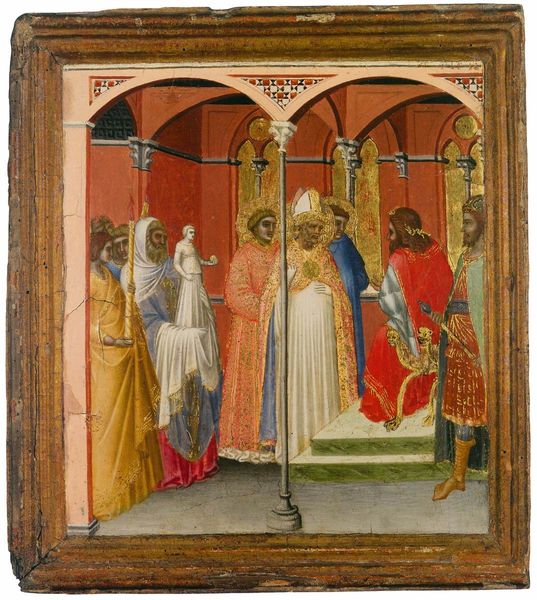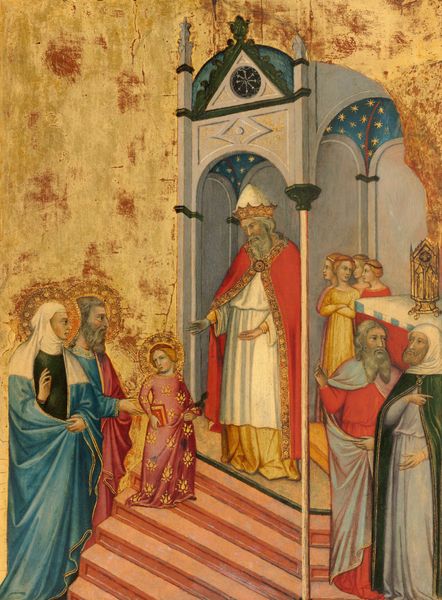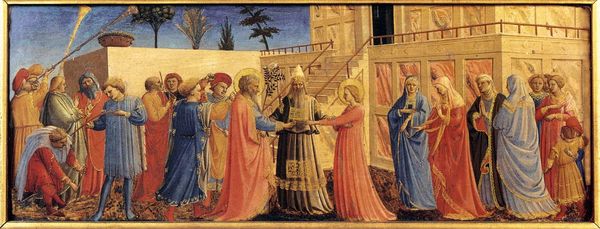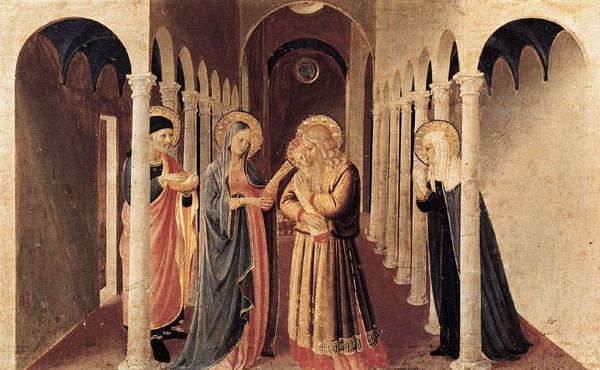
painting, fresco
#
portrait
#
medieval
#
allegory
#
narrative-art
#
painting
#
prophet
#
gothic
#
holy-places
#
figuration
#
fresco
#
oil painting
#
jesus-christ
#
christianity
#
history-painting
#
italian-renaissance
#
christ
Dimensions: 200 x 185 cm
Copyright: Public domain
Curator: Oh, look at that tender exchange. There's something about the way those figures are rendered, all draped and weighty, that feels so profoundly human. Editor: You’re responding, I imagine, to Giotto’s "Presentation of Christ at the Temple," a fresco painted around 1306 as part of his cycle in the Scrovegni Chapel in Padua. A crucial work from the early Italian Renaissance. Curator: Fresco! The colors sing even after all these centuries. And those blues... they just lift my spirits, don't they? Although, perhaps that sky has deteriorated a bit? Still, it lends the scene a quiet melancholy, like a hymn sung in a minor key. Editor: The chapel, and indeed this fresco, were commissioned by Enrico Scrovegni, a wealthy Paduan banker, possibly as an act of atonement for his family’s usurious activities. This is very much about public display, both devotional and self-promotional. It sets the stage, quite literally, for a new era in how art could serve individual agendas and reflect emergent cultural values. Curator: I always find something heartbreakingly pure in these depictions of religious stories. Especially when Giotto renders everyone as, well, actual people. Look at Saint Joseph, holding the turtle doves for sacrifice. There's a weariness etched into his face. It pulls me in, that subtle realism amidst the holy. Editor: What I see here is the tension between tradition and innovation. Giotto grounds his figures in physical reality, as you say. And note the architectural elements, the use of perspective. But the function remains rooted in its time; religious didacticism, delivered within the strictures of social power and influence. The story's primary purpose was to edify viewers and to legitimize Enrico Scrovegni's social position by showcasing both piety and artistic patronage. Curator: Right. It’s about the earthly and ethereal interwoven, and he did it so gorgeously. It gives me such an uncanny feeling, even after so many centuries. Thank you Giotto and, I must say, you as well. Editor: Thank you! It's the complexity, really. How this work served not only as a symbol of faith but also as a shrewd assertion of earthly power that continues to fascinate me.
Comments
No comments
Be the first to comment and join the conversation on the ultimate creative platform.
